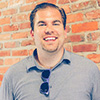If you’ve ever had to put together a group of people to complete a work project, run a committee or even just order some pizzas, you’ve probably noticed that some teams just “gel” better than others.
Which may have led you to wonder: is building great teams an art or a science?
The answer is yes.
Which is to say that putting a team together is both an art and a science. You can better your odds by using proven research, but the ultimate result is a little unpredictable — just like human beings.
First, what makes a great team? This is actually an entire scientific field, at least big enough to support an entire annual conference called the Science of Team Science meeting. So we won’t get into all the details here; instead we’ll provide a little taste of the research around building great teams.
The Ideas for Leaders organization has found that high-performing teams share similar attributes — like energy, creativity, and mutual commitment — that can be observed, quantified and measured. Teams with these qualities are likely to be higher-performing than others.
But how do you ensure that your teams are high-energy, creative, and committed? MIT’s Human Dynamics laboratory actually researched this by giving people little electronic badges that recorded team members’ communications — who they talked to and how much, even their tone of voice and body language.

The MIT researchers tracked high-performing teams and low-performing teams using these badges and found that the best teams share some defining characteristics:
- Everyone on the team talks and listens in roughly equal measure.
- Everyone talks to each other, not just to the team leader.
- Team members carry on “back-channel” or side conversations. This sounds counterintuitive and distracting, but these side conversations actually lead to better overall team performance.
- Team members don’t stay insulated on their one team — they periodically, as MIT put it, “go exploring outside the team and bring information back.”
Increasing these characteristics on a team can make huge gains in productivity. For example, the researchers advised a call-center manager to change up his employees’ coffee break schedule so that every member of a particular team had a break at the same time. “That would allow people more time to socialize with their teammates, away from their workstations,” the researchers wrote. “Though the suggestion flew in the face of standard efficiency practices, the manager was baffled and desperate, so he tried it.” It worked: average call handling time dropped by 20 percent among the lowest performing teams, and by 8 percent center-wide. This manager is now changing the break schedule at all 10 centers he runs and is predicting $15 million a year in productivity increases.
The MIT researchers also found that after tracking a team’s performance for a few weeks, it becomes possible to predict whether the team is high-performing or low-performing simply by looking at the data and without ever meeting any of its members. They have even predicted which team would win a business plan contest by looking at data from team members wearing electronic badges at a cocktail party.
Those are some pretty good insights just from observing communication styles.

So how do you generate this energy and great communication on your own teams? The personality of individual members may play a role. Look for someone with a leadership-oriented personality who is also able to “dial it back” a little — someone who leads by drawing out ideas and thoughts from other team members, not someone who dominates.
Finding that person is a bit of an art, but you can get help from a scientifically-backed personality test that helps you learn about the strengths and weaknesses of all your team members.
Finally, one last thought: great teams are not made of monolithic personalities.
As we’ve said before, the best teams embrace diversity of all kinds — race, age, sex, education, cultural background, and more. One recruiting firm CEO wrote that “surrounding yourself with people that do not see the world through your lens can be incredibly valuable.” The most profitable teams are often the most diverse ones, so it pays — quite literally — to build teams with a wide variety of people and personality types.
At Traitify, we subscribe to the belief that gathering data on employee personalities is the first step to building understanding and high-performing, highly efficient teams. Learn more about how we use science to help you recruit and retain the right people.




 Subscribe to Our Blog
Subscribe to Our Blog 
